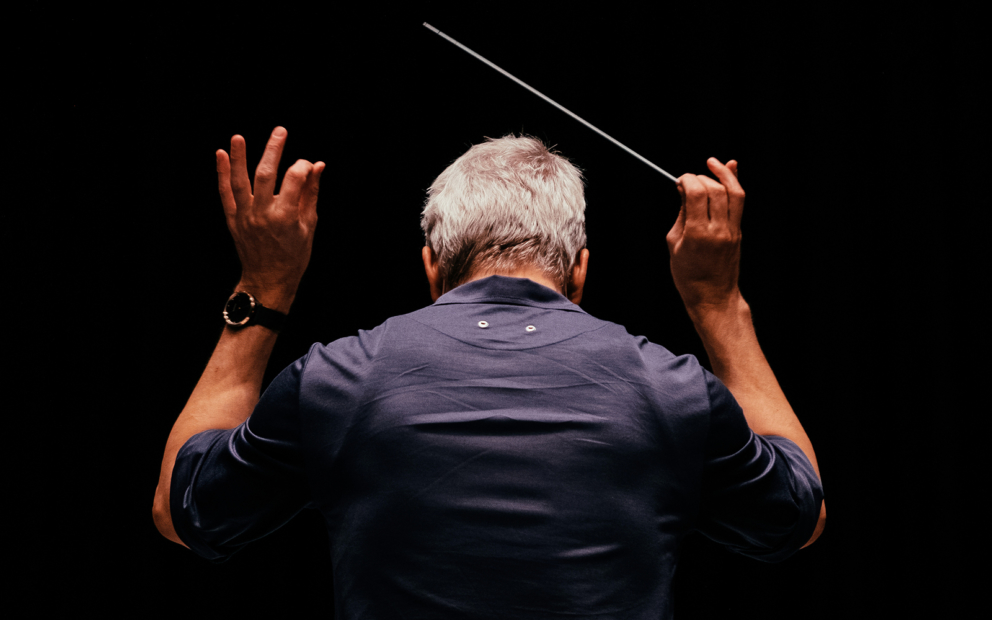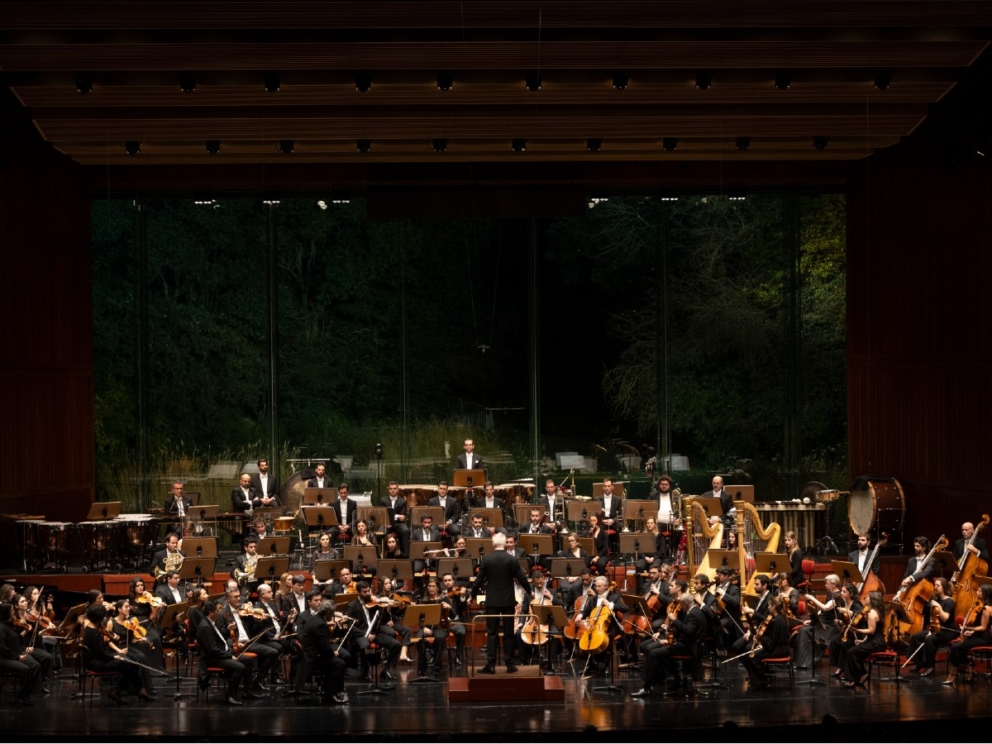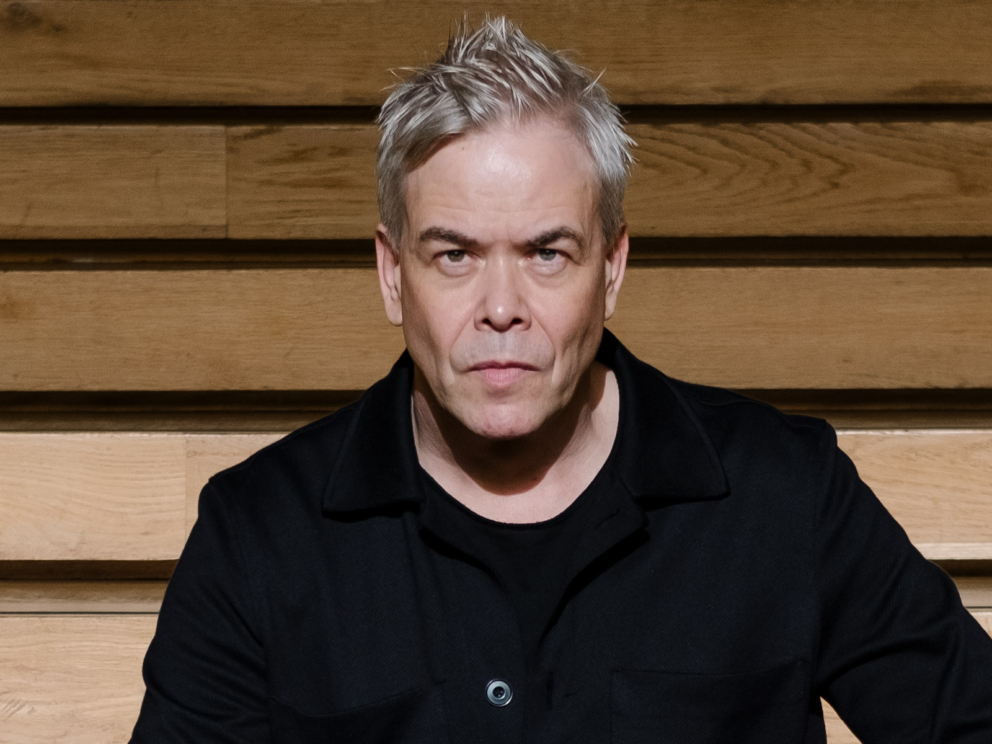Beethoven: Symphony No. 2
Gulbenkian Orchestra / Hannu Lintu

Performers
- Conductor
-

Gulbenkian Orchestra
In 1962, the Calouste Gulbenkian Foundation decided to establish a permanent orchestral ensemble. Originally with only twelve musicians (strings and continuo) it was named “Orquestra de Câmara Gulbenkian”. This collective was successively enlarged and today the “Orquestra Gulbenkian” (the name it has adopted since 1971) has a permanent body of sixty instrumentalists, a number that can be expanded depending on the repertoire.
This structure allows the Gulbenkian Orchestra to interpret works from the Baroque and Classical periods, a significant part of 19th century orchestral literature and much of the music of the 20th century, including works belonging to the current repertoire of the traditional symphonic orchestras. In each season, the orchestra performs on a regular series of concerts at the Gulbenkian Grand Auditorium in Lisbon, where it has had the opportunity of working together with some of leading names of the world of music (conductors and soloists). It has also performed on numerous locations all over Portugal, in an effort to decentralize music and culture.
The orchestra has been constantly expanding its activities in the international level, performing in Europe, Asia Africa, and the Americas. In the recording field, Orquestra Gulbenkian is associated to labels as Philips, Deutsche Grammophon, Hyperion, Teldec, Erato, Adès, Nimbus, Lyrinx, Naïve and Pentatone, among others, and this activity was recognized with several international prizes.
-

Hannu Lintu
Music Director
“Dynamic and sharp on the podium” (Bachtrack) and with a “scrupulous ear for instrumental color and blend” (Washington Post), Hannu Lintu maintains his reputation as one of the world’s finest conductors. This season, Lintu continues his tenures as Music Director of Orquestra Gulbenkian and Chief Conductor of Finnish National Opera and Ballet, proving himself a master of both symphonic and operatic repertoire. The appointments followed a stream of successful concerts with Orquestra Gulbenkian and breathtaking productions with Finnish National Opera and Ballet. The 2023/24 season also saw his announcement as Artistic Partner of Lahti Symphony Orchestra from Autumn 2025.
Highlights of the 2024/25 season include his debut at Bregenzer Festspiele conducting Oedipe and returns to Chicago Symphony, BBC Symphony, Finnish Radio Symphony, London Philharmonic, St Louis Symphony and Oregon Symphony.
Symphonic highlights of recent years have seen Lintu conduct the New York Philharmonic (including an immediate re-invitation from the orchestra to perform at Bravo! Vail Festival), Berliner Philharmoniker, Cleveland Orchestra, Bavarian Radio Symphony Orchestra, Orchestre National de Radio France, Boston Symphony Orchestra, Swedish Radio Symphony Orchestra, Deutsches Symphonie-Orchester Berlin, Radio Filharmonisch Orkest, Atlanta Symphony Orchestra, Konzerthaus Berlin, Orchestre de Chambre de Lausanne and Orchestre Symphonique de Montréal, alongside the likes of Gil Shaham, Kirill Gerstein, Daniil Trifonov and Sergei Babayan.
As an expert in both operatic as well as symphonic repertoire, Lintu’s recent opera highlights have included Wagner’s Der fliegende Holländer at Opera de Paris and Debussy’s Pelléas et Mélisande at Bayerische Staatsoper as a guest conductor, as well as multiple productions at Finnish National Opera and Ballet, including a recent multi-season Ring Cycle, Poulenc’s Dialogues des Carmélites, Mozart’s Don Giovanni, a choregraphed reimagining of Verdi’s Messa da Requiem, Puccini’s Turandot, Richard Strauss’ Salome, and Britten’s Billy Budd.
Lintu studied cello and piano at the Sibelius Academy, where he also later studied conducting with Jorma Panula. He participated in masterclasses with Myung-Whun Chung at L’Accademia Musicale Chigiana in Siena, Italy, and took first prize at the Nordic Conducting Competition in Bergen in 1994.
Programme
Ludwig van Beethoven
Symphony n.º 2, in D major, op. 36
1. Adagio molto – Allegro con brio
2. Larghetto
3. Scherzo: Allegro – Trio
4. Allegro molto